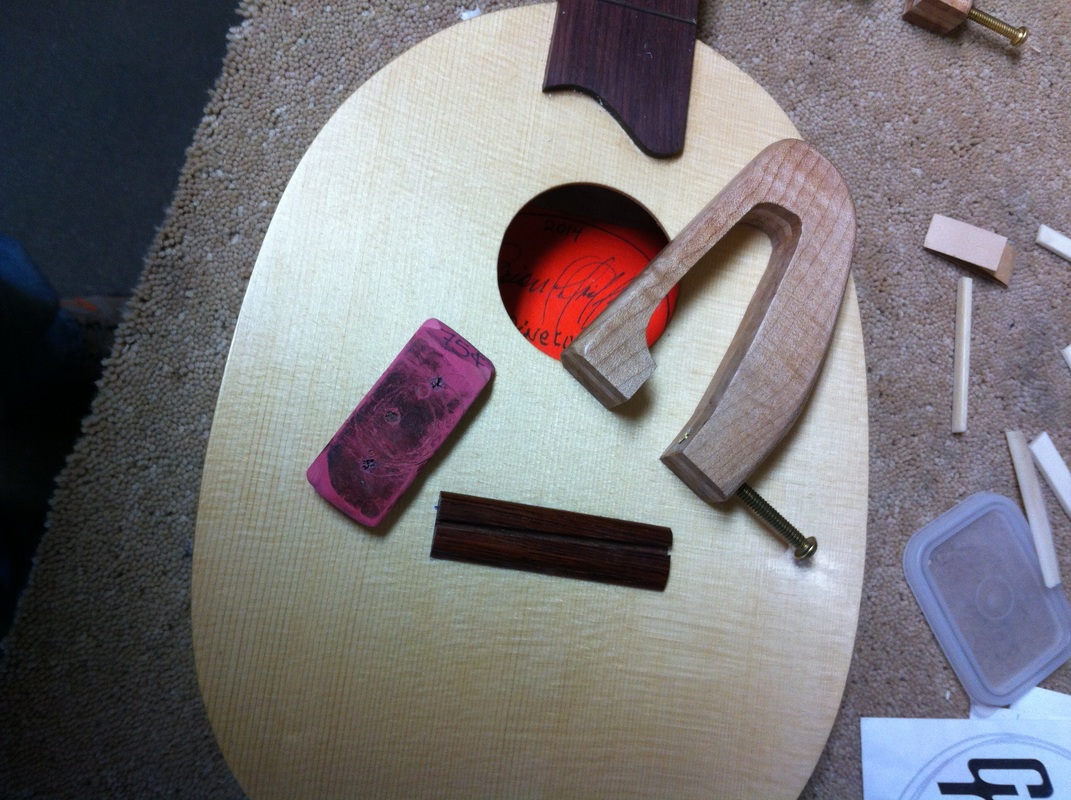AT LAST the French Polishing is done and it is time to get strings on these Concert Pinecones. First job is to glue on the bridge.
| Now you lift the bridge away and expose the area that it will be glued to. With a razor blade carefully scrape away the shellac that you have just laboriously applied to ready it for glueing. | With a pre measured device I carefully locate the bridge on the top and tape it off delineating its edges. I use at least two layers of tape so that when the clamps are tightened the bridge will not move out of position. The wooden measuring device sets the exact distance between nut and saddle as well as being cut to the same shape as the fretboard. It sets the bridge centered on the fretboard. Now apply a thin coat of glue to both the scraped top and the bridge and set it in position. I made these clamps just the size to slip into the sound hole and straddle the cross top brace between the sound hole and the bridge position. The rubber eraser is to protect the finish on the bridge. |
And here we are, glued and clamped. A couple of hours under clamp pressure and I will install the Peghed tuners, run the strings from the tuners down the fretboard so I can decide where to drill the string holes in the bridge.
I mic. the strings and drill holes just barely large enough to accept the various strings. The third string always gets the largest hole. I carefully mark the hole location, score the spot with an awl and drill it using my Dremel tool. We are almost ready to string them up- THE MAGIC MOMENT.
I mic. the strings and drill holes just barely large enough to accept the various strings. The third string always gets the largest hole. I carefully mark the hole location, score the spot with an awl and drill it using my Dremel tool. We are almost ready to string them up- THE MAGIC MOMENT.
WHAT FUN it is after all these weeks to sit on the hearth and play in these new ukes. Of course the strings stretch seemingly forever so you tune, play and tune again. I go from instrument to instrument picking and strumming very aggressively to stretch those strings, and listening to each uke for its individual characteristics. Note the pencil and pad on the hearth. I am also giving these new ukes a really close look over for little fixes I need to do. A nut is too wide, a saddle has a sharp edge, one of these ukes had the G notch filed too deeply and it buzzed slightly when picked in open position so my notation was, make a new nut. There are always a few cosmetic issues to address. BUT THE GOOD NEWS, each of these ukes sounds great. Each of them has a nice low action and each is a joy to play, I played them last night for three hours. THE BAD NEWS; they are all spoken for, Money down on one, verbal commitments on two. I will let you know if any of the sales fall through and one becomes available.






